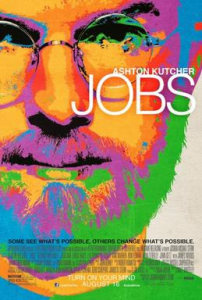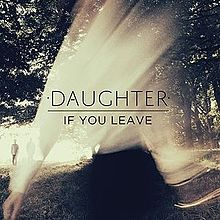Today I finished reading “The Jetstream of Success” by Julian Pencilliah
Archives for 2014
Watching – Jobs

Today I watched “Jobs”
Interesting (if not strictly truthful) bio-pic.
It’s hard to watch someone portray someone who you knew as a friend.
Watching – In a World…

Today I watched “In a World…”
Not funny.
At all.
For people who are supposed to be professional voice actors at the peak of their game you’d think they could deliver a line that didn’t sound like it was made out of solid oak with inlaid mahogany.
Stiff.
Wooden.
Flat.
Boring.
I practiced on my guitar through the entire movie completely disinterested in what was happening to any of the characters.
Basically it’s a film about some chick wishing she had a deeper or voice or something.
Whatever.
Seriously.
What-fucking-ever.
Paper – A Parameterized Centrality Metric for Network Analysis
Today I read a paper titled “A Parameterized Centrality Metric for Network Analysis”
The abstract is:
A variety of metrics have been proposed to measure the relative importance of nodes in a network
One of these, alpha-centrality [Bonacich, 2001], measures the number of attenuated paths that exist between nodes
We introduce a normalized version of this metric and use it to study network structure, specifically, to rank nodes and find community structure of the network
Specifically, we extend the modularity-maximization method [Newman and Girvan, 2004] for community detection to use this metric as the measure of node connectivity
Normalized alpha-centrality is a powerful tool for network analysis, since it contains a tunable parameter that sets the length scale of interactions
By studying how rankings and discovered communities change when this parameter is varied allows us to identify locally and globally important nodes and structures
We apply the proposed method to several benchmark networks and show that it leads to better insight into network structure than alternative methods
Read – The Power of Habit
Today I finished reading “The Power of Habit: Why We Do What We Do in Life and Business” by Charles Duhigg
Studying – Creating characters in Adobe Illustrator
This month I am studying “Creating characters in Adobe Illustrator”
It is an online class consisting mostly of prerecorded video and some exercises.
Should be fun.
Update: Between the video, exercises and extra work I logged 29 hours over the month in improving my character creation skills using Adobe Illustrator.
Listening – Melophobia

This week I am listening to “Melophobia” by Cage The Elephant
Paper – Dynamic Multi-Vehicle Routing with Multiple Classes of Demands
Today I read a paper titled “Dynamic Multi-Vehicle Routing with Multiple Classes of Demands”
The abstract is:
In this paper we study a dynamic vehicle routing problem in which there are multiple vehicles and multiple classes of demands
Demands of each class arrive in the environment randomly over time and require a random amount of on-site service that is characteristic of the class
To service a demand, one of the vehicles must travel to the demand location and remain there for the required on-site service time
The quality of service provided to each class is given by the expected delay between the arrival of a demand in the class, and that demand’s service completion
The goal is to design a routing policy for the service vehicles which minimizes a convex combination of the delays for each class
First, we provide a lower bound on the achievable values of the convex combination of delays
Then, we propose a novel routing policy and analyze its performance under heavy load conditions (i.e., when the fraction of time the service vehicles spend performing on-site service approaches one)
The policy performs within a constant factor of the lower bound (and thus the optimal), where the constant depends only on the number of classes, and is independent of the number of vehicles, the arrival rates of demands, the on-site service times, and the convex combination coefficients
Read – Lucky Luke – L’Integrale 13
Today I finished reading “Lucky Luke – L’Integrale 13” by Morris
Paper – Stochastic Surveillance Strategies for Spatial Quickest Detection
Today I read a paper titled “Stochastic Surveillance Strategies for Spatial Quickest Detection”
The abstract is:
We design persistent surveillance strategies for the quickest detection of anomalies taking place in an environment of interest
From a set of predefined regions in the environment, a team of autonomous vehicles collects noisy observations, which a control center processes
The overall objective is to minimize detection delay while maintaining the false alarm rate below a desired threshold
We present joint (i) anomaly detection algorithms for the control center and (ii) vehicle routing policies
For the control center, we propose parallel cumulative sum (CUSUM) algorithms (one for each region) to detect anomalies from noisy observations
For the vehicles, we propose a stochastic routing policy, in which the regions to be visited are chosen according to a probability vector
We study stationary routing policy (the probability vector is constant) as well as adaptive routing policies (the probability vector varies in time as a function of the likelihood of regional anomalies)
In the context of stationary policies, we design a performance metric and minimize it to design an efficient stationary routing policy
Our adaptive policy improves upon the stationary counterpart by adaptively increasing the selection probability of regions with high likelihood of anomaly
Finally, we show the effectiveness of the proposed algorithms through numerical simulations and a persistent surveillance experiment
Read – Lucky Luke #22 – Les Daltons Dans Le Blizzard
Today I finished reading “Lucky Luke #22 – Les Daltons Dans Le Blizzard” by Rene & Goscinny
Read – Lucky Luke #17 – Sur La Piste Des Dalton
Today I finished reading “Lucky Luke #17 – Sur La Piste Des Dalton” by Rene & Goscinny
Read – An Appetite for Wonder
Today I finished reading “An Appetite for Wonder: The Making of a Scientist” by Richard Dawkins
Paper – Detecting Separation in Robotic and Sensor Networks
Today I read a paper titled “Detecting Separation in Robotic and Sensor Networks”
The abstract is:
In this paper we consider the problem of monitoring detecting separation of agents from a base station in robotic and sensor networks
Such separation can be caused by mobility and/or failure of the agents
While separation/cut detection may be performed by passing messages between a node and the base in static networks, such a solution is impractical for networks with high mobility, since routes are constantly changing
We propose a distributed algorithm to detect separation from the base station
The algorithm consists of an averaging scheme in which every node updates a scalar state by communicating with its current neighbors
We prove that if a node is permanently disconnected from the base station, its state converges to $0$
If a node is connected to the base station in an average sense, even if not connected in any instant, then we show that the expected value of its state converges to a positive number
Therefore, a node can detect if it has been separated from the base station by monitoring its state
The effectiveness of the proposed algorithm is demonstrated through simulations, a real system implementation and experiments involving both static as well as mobile networks
Paper – Brain-Computer Interface Controlled Robotic Gait Orthosis
Today I read a paper titled “Brain-Computer Interface Controlled Robotic Gait Orthosis”
The abstract is:
Reliance on wheelchairs after spinal cord injury (SCI) leads to many medical co-morbidities
Treatment of these conditions contributes to the majority of SCI health care costs
Restoring able-body-like ambulation after SCI may reduce the incidence of these conditions, and increase independence and quality of life
However, no biomedical solution exists that can reverse this lost neurological function, and hence novel methods are needed
Brain-computer interface (BCI) controlled lower extremity prosthesis may constitute one such novel approach
One subject with able-body and one with paraplegia due to SCI underwent electroencephalogram (EEG) recording while engaged in alternating epochs of idling and walking kinesthetic motor imagery (KMI)
These data were analyzed to generate an EEG prediction model for online BCI operation
A commercial robotic gait orthosis (RoGO) system (treadmill suspended), was interfaced with the BCI computer
In an online test, the subjects were tasked to ambulate using the BCI-RoGO system when prompted by computerized cues
The performance of this system was assessed with cross-correlation analysis, and omission and false alarm rates
The offline accuracy of the EEG prediction model averaged 86.3%
The cross-correlation between instructional cues and BCI-RoGO walking epochs averaged 0.812 +/- 0.048 (p-value<10^-4)
There were on average 0.8 false alarms per session and no omissions
This is the first time a person with parapegia due to SCI regained basic brain-controlled ambulation, thereby indicating that restoring brain-controlled ambulation is feasible
Future work will test this system in a population of individuals with SCI
If successful, this may justify future development of invasive BCI-controlled lower extremity prostheses
This system may also be applied to incomplete SCI to improve neurological outcomes beyond those of standard physiotherapy
Listening – Comedown Machine

Comedown Machine by The Strokes
This week I am listening to “Comedown Machine” by The Strokes
Read – Phil Steel
Today I finished reading “Phil Steel” by Morris
Watching – The Hunger Games: Catching Fire
Today I watched “The Hunger Games: Catching Fire”
Watching – Stardust
Today I watched “Stardust”
Read – The Icarus Deception
Today I finished reading “The Icarus Deception: How High Will You Fly?” by Seth Godin
Read – Successful Freelancing And Outsourcing
Today I finished reading “Successful Freelancing And Outsourcing” by Maria Johnsen
Paper – Characterizing and approximating eigenvalue sets of symmetric interval matrices
Today I read a paper titled “Characterizing and approximating eigenvalue sets of symmetric interval matrices”
The abstract is:
We consider the eigenvalue problem for the case where the input matrix is symmetric and its entries perturb in some given intervals
We present a characterization of some of the exact boundary points, which allows us to introduce an inner approximation algorithm, that in many case estimates exact bounds
To our knowledge, this is the first algorithm that is able to guaran- tee exactness
We illustrate our approach by several examples and numerical experiments
Read – Hooked
Today I finished reading “Hooked: How to Build Habit-Forming Products” by Nir Eyal
Read – Lucky Luke – L’Integrale 1
Today I finished reading “Lucky Luke – L’Integrale 1” by Morris
Listening – Nothing Was The Same

Nothing Was The Same by Drake
This week I am listening to “Nothing Was The Same” by Drake
Scary yet beautifully abstruse
I think we can all agree that Donald Trump says some utterly moronic shit at times.
The scary thing is if you read any quote or sound-bite by Donald Trump in the voice of Futurama’s Zap Brannigan it becomes both scary and serenely beautiful at the same time.
And then you realise, this isn’t a comedy show. It’s politics.
But I repeat myself.
Remember! Zap Brannigan’s voice!
“He’s not a war hero. He’s a war hero because he was captured. I like people who weren’t captured.”
“He said that he’s pathological and he’s got basically pathological disease … I don’t want a person that’s got pathological disease.”
“I never attacked him on his look, and believe me, there’s plenty of subject matter right there.”
“I will build the greatest wall that you’ve ever seen.”
“[She] is unattractive, both inside and out. I fully understand why her former husband left her for a man.”
“The concept of global warming was created by and for the Chinese.”
Paper – Detecting Friendship Within Dynamic Online Interaction Networks
Today I read a paper titled “Detecting Friendship Within Dynamic Online Interaction Networks”
The abstract is:
In many complex social systems, the timing and frequency of interactions between individuals are observable but friendship ties are hidden
Recovering these hidden ties, particularly for casual users who are relatively less active, would enable a wide variety of friendship-aware applications in domains where labeled data are often unavailable, including online advertising and national security
Here, we investigate the accuracy of multiple statistical features, based either purely on temporal interaction patterns or on the cooperative nature of the interactions, for automatically extracting latent social ties
Using self-reported friendship and non-friendship labels derived from an anonymous online survey, we learn highly accurate predictors for recovering hidden friendships within a massive online data set encompassing 18 billion interactions among 17 million individuals of the popular online game Halo: Reach
We find that the accuracy of many features improves as more data accumulates, and cooperative features are generally reliable
However, periodicities in interaction time series are sufficient to correctly classify 95% of ties, even for casual users
These results clarify the nature of friendship in online social environments and suggest new opportunities and new privacy concerns for friendship-aware applications that do not require the disclosure of private friendship information
Paper – A Neural Network Classifier of Volume Datasets
Today I read a paper titled “A Neural Network Classifier of Volume Datasets”
The abstract is:
Many state-of-the art visualization techniques must be tailored to the specific type of dataset, its modality (CT, MRI, etc.), the recorded object or anatomical region (head, spine, abdomen, etc.) and other parameters related to the data acquisition process
While parts of the information (imaging modality and acquisition sequence) may be obtained from the meta-data stored with the volume scan, there is important information which is not stored explicitly (anatomical region, tracing compound)
Also, meta-data might be incomplete, inappropriate or simply missing
This paper presents a novel and simple method of determining the type of dataset from previously defined categories
2D histograms based on intensity and gradient magnitude of datasets are used as input to a neural network, which classifies it into one of several categories it was trained with
The proposed method is an important building block for visualization systems to be used autonomously by non-experts
The method has been tested on 80 datasets, divided into 3 classes and a “rest” class
A significant result is the ability of the system to classify datasets into a specific class after being trained with only one dataset of that class
Other advantages of the method are its easy implementation and its high computational performance
Paper – Sensor Management: Past, Present, and Future
Today I read a paper titled “Sensor Management: Past, Present, and Future”
The abstract is:
Sensor systems typically operate under resource constraints that prevent the simultaneous use of all resources all of the time
Sensor management becomes relevant when the sensing system has the capability of actively managing these resources; i.e., changing its operating configuration during deployment in reaction to previous measurements
Examples of systems in which sensor management is currently used or is likely to be used in the near future include autonomous robots, surveillance and reconnaissance networks, and waveform-agile radars
This paper provides an overview of the theory, algorithms, and applications of sensor management as it has developed over the past decades and as it stands today
Paper – Robotic Applications in Cardiac Surgery
Today I read a paper titled “Robotic Applications in Cardiac Surgery”
The abstract is:
Traditionally, cardiac surgery has been performed through a median sternotomy, which allows the surgeon generous access to the heart and surrounding great vessels
As a paradigm shift in the size and location of incisions occurs in cardiac surgery, new methods have been developed to allow the surgeon the same amount of dexterity and accessibility to the heart in confined spaces and in a less invasive manner
Initially, long instruments without pivot points were used, however, more recent robotic telemanipulation systems have been applied that allow for improved dexterity, enabling the surgeon to perform cardiac surgery from a distance not previously possible
In this rapidly evolving field, we review the recent history and clinical results of using robotics in cardiac surgery
Listening – Acid Rap

Acid Rap by Chance The Rapper
This week I am listening to “Acid Rap” by Chance The Rapper
Read – Advanced Research and Trends in New Technologies, Software, Human-Computer Interaction, and Communicability
Today I finished reading “Advanced Research and Trends in New Technologies, Software, Human-Computer Interaction, and Communicability” by Francisco Vicente Cipolla-Ficarra
Paper – Analyzing the Social Structure and Dynamics of E-mail and Spam in Massive Backbone Internet Traffic
Today I read a paper titled “Analyzing the Social Structure and Dynamics of E-mail and Spam in Massive Backbone Internet Traffic”
The abstract is:
E-mail is probably the most popular application on the Internet, with everyday business and personal communications dependent on it
Spam or unsolicited e-mail has been estimated to cost businesses significant amounts of money
However, our understanding of the network-level behavior of legitimate e-mail traffic and how it differs from spam traffic is limited
In this study, we have passively captured SMTP packets from a 10 Gbit/s Internet backbone link to construct a social network of e-mail users based on their exchanged e-mails
The focus of this paper is on the graph metrics indicating various structural properties of e-mail networks and how they evolve over time
This study also looks into the differences in the structural and temporal characteristics of spam and non-spam networks
Our analysis on the collected data allows us to show several differences between the behavior of spam and legitimate e-mail traffic, which can help us to understand the behavior of spammers and give us the knowledge to statistically model spam traffic on the network-level in order to complement current spam detection techniques
Read – Big Data at Work
Today I finished reading “Big Data at Work: Dispelling the Myths, Uncovering the Opportunities” by Thomas H. Davenport
Paper – Design and Construction of a Brain-Like Computer: A New Class of Frequency-Fractal Computing Using Wireless Communication in a Supramolecular Organic, Inorganic System
Today I read a paper titled “Design and Construction of a Brain-Like Computer: A New Class of Frequency-Fractal Computing Using Wireless Communication in a Supramolecular Organic, Inorganic System”
The abstract is:
Here, we introduce a new class of computer which does not use any circuit or logic gate
In fact, no program needs to be written: it learns by itself and writes its own program to solve a problem
Godels incompleteness argument is explored here to devise an engine where an astronomically large number of IfThen arguments are allowed to grow by self assembly, based on the basic set of arguments written in the system, thus, we explore the beyond Turing path of computing but following a fundamentally different route adopted in the last half a century old non Turing adventures
Our hardware is a multilayered seed structure
If we open the largest seed, which is the final hardware, we find several computing seed structures inside, if we take any of them and open, there are several computing seeds inside
We design and synthesize the smallest seed, the entire multilayered architecture grows by itself
The electromagnetic resonance band of each seed looks similar, but the seeds of any layer shares a common region in its resonance band with inner and upper layer, hence a chain of resonance bands is formed (frequency fractal) connecting the smallest to the largest seed (hence the name invincible rhythm or Ajeya Chhandam in Sanskrit)
Studying – Developing apps and games with NativeScript
This month I am studying “Developing apps and games with NativeScript”
Another competing JavaScript stack for mobile development. Let’s see what the difference is. This is a workshop spread over three weekends.
Update March 17th, 2015: I am now teaching week long classes at <name drop of company> in Palo Alto on this very subject.
Paper – Assembly and Disassembly Planning by using Fuzzy Logic & Genetic Algorithms
Today I read a paper titled “Assembly and Disassembly Planning by using Fuzzy Logic & Genetic Algorithms”
The abstract is:
The authors propose the implementation of hybrid Fuzzy Logic-Genetic Algorithm (FL-GA) methodology to plan the automatic assembly and disassembly sequence of products
The GA-Fuzzy Logic approach is implemented onto two levels
The first level of hybridization consists of the development of a Fuzzy controller for the parameters of an assembly or disassembly planner based on GAs
This controller acts on mutation probability and crossover rate in order to adapt their values dynamically while the algorithm runs
The second level consists of the identification of theoptimal assembly or disassembly sequence by a Fuzzy function, in order to obtain a closer control of the technological knowledge of the assembly/disassembly process
Two case studies were analyzed in order to test the efficiency of the Fuzzy-GA methodologies
Paper – An Approach For Robots To Deal With Objects
Today I read a paper titled “An Approach For Robots To Deal With Objects”
The abstract is:
Understanding object and its context are very important for robots when dealing with objects for completion of a mission
In this paper, an Affordance-based Ontology (ABO) is proposed for easy robot dealing with substantive and non-substantive objects
An ABO is a machine-understandable representation of objects and their relationships by what it’s related to and how it’s related
By using ABO, when dealing with a substantive object, robots can understand the representation of its object and its relation with other non-substantive objects
When the substantive object is not available, the robots have the understanding ability, in term of objects and their functions to select a non substantive object in order to complete the mission, such as giving raincoat or hat instead of getting stuck due to the unavailability of substantive object, e.g
umbrella
The experiment is done in the Ubiquitous Robotics Technology (u-RT) Space of National Institute of Advanced Industrial Science and Technology (AIST), Tsukuba, Japan
Listening – Long Way Down

Long Way Down by Tom Odell
This week I am listening to “Long Way Down” by Tom Odell
Paper – Using virtual human for an interactive customer-oriented constrained environment design
Today I read a paper titled “Using virtual human for an interactive customer-oriented constrained environment design”
The abstract is:
For industrial product design, it is very important to take into account assembly/disassembly and maintenance operations during the conceptual and prototype design stage
For these operations or other similar operations in a constrained environment, trajectory planning is always a critical and difficult issue for evaluating the design or for the users’ convenience
In this paper, a customer-oriented approach is proposed to partially solve ergonomic issues encountered during the design stage of a constrained environment
A single objective optimization based method is taken from the literature to generate the trajectory in a constrained environment automatically
A motion capture based method assists to guide the trajectory planning interactively if a local minimum is encountered within the single objective optimization
At last, a multi-objective evaluation method is proposed to evaluate the operations generated by the algorithm
Paper – NL Understanding with a Grammar of Constructions
Today I read a paper titled “NL Understanding with a Grammar of Constructions”
The abstract is:
We present an approach to natural language understanding based on a computable grammar of constructions
A “construction” consists of a set of features of form and a description of meaning in a context
A grammar is a set of constructions
This kind of grammar is the key element of Mincal, an implemented natural language, speech-enabled interface to an on-line calendar system
The system consists of a NL grammar, a parser, an on-line calendar, a domain knowledge base (about dates, times and meetings), an application knowledge base (about the calendar), a speech recognizer, a speech generator, and the interfaces between those modules
We claim that this architecture should work in general for spoken interfaces in small domains
In this paper we present two novel aspects of the architecture: (a) the use of constructions, integrating descriptions of form, meaning and context into one whole; and (b) the separation of domain knowledge from application knowledge
We describe the data structures for encoding constructions, the structure of the knowledge bases, and the interactions of the key modules of the system.
Paper – The effects of graphical interface design characteristics on human-computer interaction task efficiency
Today I read a paper titled “The effects of graphical interface design characteristics on human-computer interaction task efficiency”
The abstract is:
The main objective of this paper was to investigate the effects of a computer screen interface design and its related geometrical characteristics of 36 graphical objects on a user’s task efficiency
A total of 490 subjects took part in laboratory experiments that focused on the direct manipulation of a visual dialogue between a user and a computer
The subjects were asked to select an object from among a group of items randomly placed on the computer screen that were visible exclusively during the visual search process
A model expressing the mean object acquisition time as a function of graphical object size and the configuration was developed and statistically validated
The model showed an influence of geometrical design characteristics of the graphical objects (icons) and their groupings (icon structures) on the observed task efficiency
The reported results can be used at those stages of a software lifecycle that concentrate on prototyping, designing, and implementing graphical solutions for the efficient graphical user-computer interface
Listening – If You Leave

If You Leave by Daughter
This week I am listening to “If You Leave” by Daughter
Read – Boulle Et Bill, Tome 26: Faut Rigoler
Today I finished reading “Boulle Et Bill, Tome 26: Faut Rigoler” by Jean Roba
Read – Perfect Phrases for Business Letters
Today I finished reading “Perfect Phrases for Business Letters” by Ken O’Quinn
Read – Creative Entrepreneurship
Today I finished reading “Creative Entrepreneurship” by Tim O’Reilly
Obtusely Original
Yesterday I received a notice from a collections agency for an unpaid bill which I know I had paid months earlier.
I diligently called the number and after much fussing around I said “I can prove I paid the bill, I have the credit card statement that shows the amount was paid and the date it was paid on.”
“You would need to send us a copy of that statement.” said the collections “customer” service representive at the collections agency.
“Okaayyyy,” I said exasperated, “I will have to download it from my credit card’s website, print it out, redact other information, and…”
“We only accept unaltered, original documentation.” interjected the CSR before I could finish.
“Well I’m not going to contact my credit card company and have them mail me a physical copy of my statement and then mail you that statement with all the other information on it.” I countered.
“We’ll take it as a fax.” added the CSR.
“You absolutely require the original documentation?” I asked.
“Yes.” said the CSR.
“But you’re willing to let me fax it to you?”
“We’re not set up to handle physical mail.” clarified the CSR.
“I did some research on your company whilst we’re having this conversation,” I said, “it appears that your company is bogus and there are a number of investigations against various company directors.”
The telephone line went mysteriously dead.
And I never heard from that “collections agency” ever again.
Read – Midnight in the Garden of Good and Evil
Today I finished reading “Midnight in the Garden of Good and Evil: A Savannah Story” by John Berendt
Watching – Curse of the Dragon Slayer
Today I watched “Curse of the Dragon Slayer”
Read – Courtney Crumrin: The Final Spell
Today I finished reading “Courtney Crumrin: The Final Spell” by Ted Naifeh